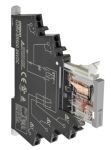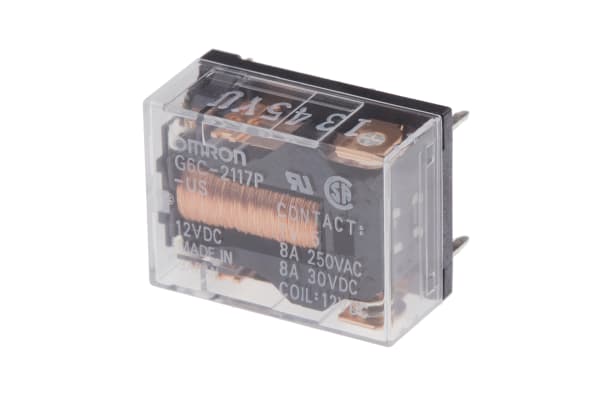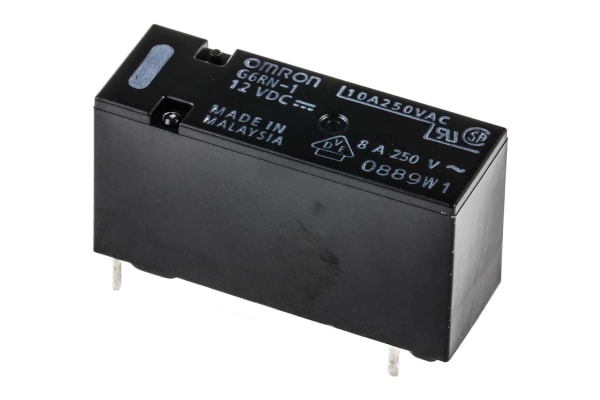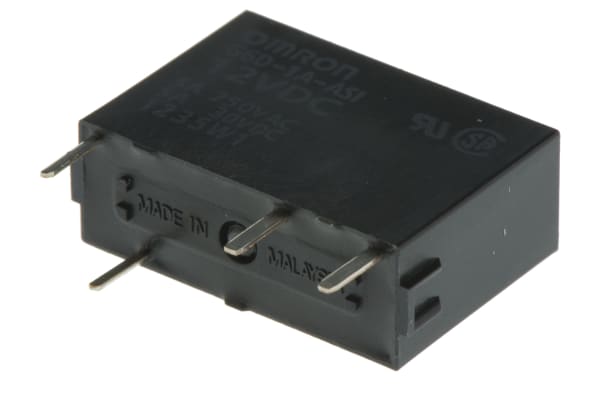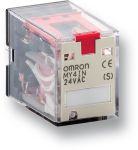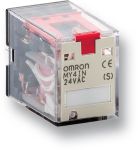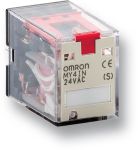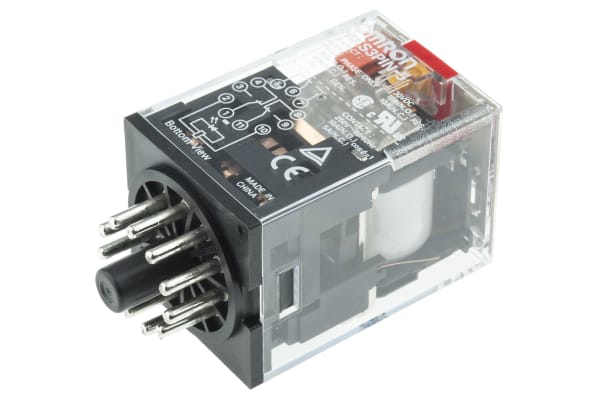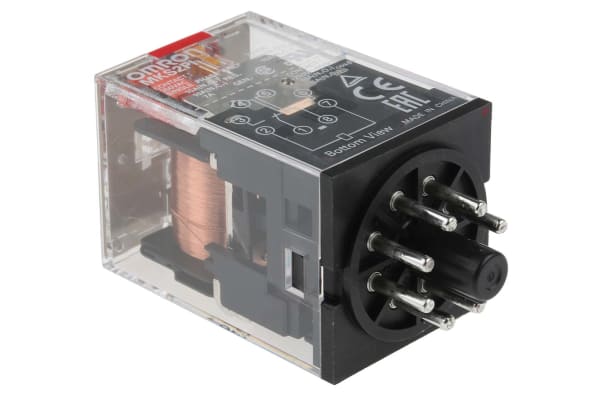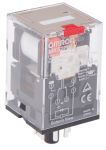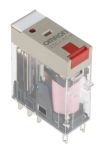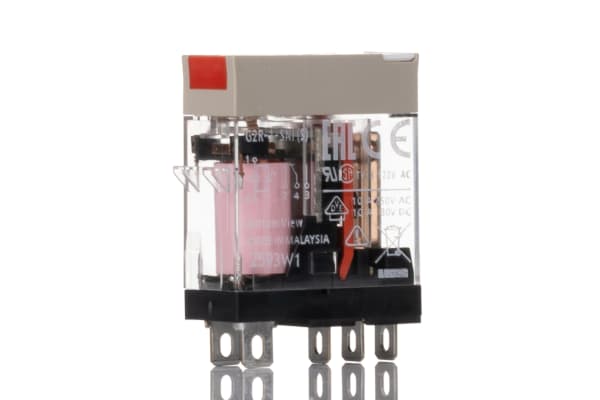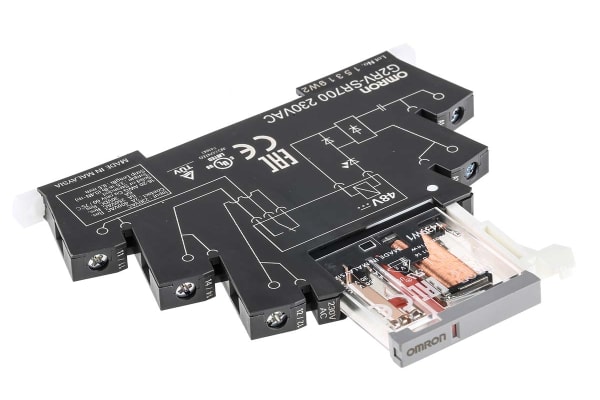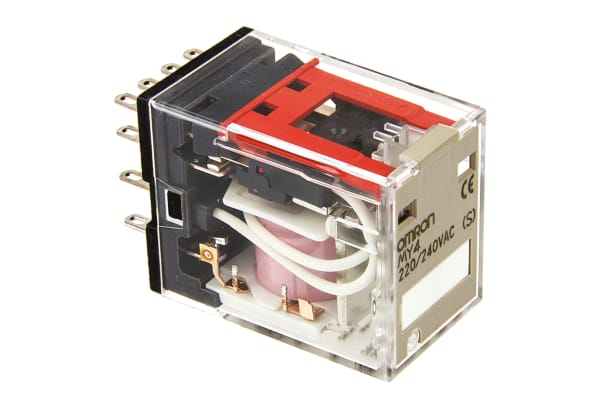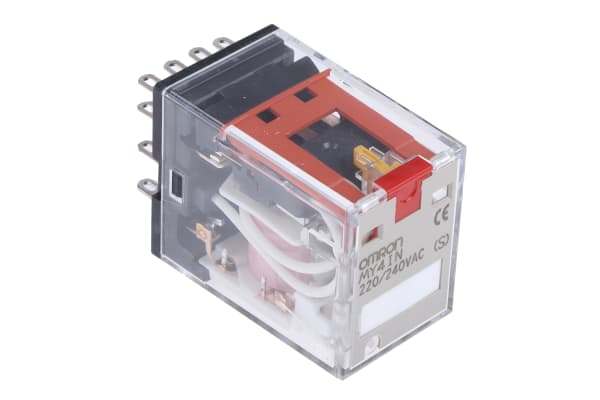Non-Latching Relays
Relays are electrical switches that are operated by electrical impulses with the primary function to open and close a circuit, they can also be referred to as industrial switches. There are 2 main types available, latching and non–latching relays.How do non-latching relays work?Non-latching relays are in a normally closed (NC) position and will stay in this state without power. When power passes through the circuit, the relay switched to a normally open (NO) position by using an internal coil to generate a magnetic force, holding this NO position. Once the current is turned off, it returns to the NC position. This makes non-latching relays well suited to push-button applications like keyboards and micro-controller input buttons.What are non-latching relays used for?Non-latching relays are highly durable and versatile components, making their performance long lasting and suitable for use in a wide range of applications, such as:Automotive enginesHousehold appliancesIndustrial machineryMedical equipmentTelecommunications equipmentWhat is the difference between latching and non-latching relays?Both types of relays in similar in design and function, however, a significant difference between them is that a latching relay will remain in the last position it when it was last powered, whereas a non-latching goes back to its normal position. This makes each more type of relay suitable for different applications. Considerations when selecting a relayWhen choosing a relay, it is important to consider a number of specifications to ensure it is fit for purpose, some factors include:Coil voltage – the required voltage to actuate the switching mechanism. If a voltage is too high this could damage the components, if it is too low then it will not actuate. Contact configuration – This is the state the contacts are in without power. For example SPST, single pole single throw.Contact material – the relay contacts are available in many materials that have certain properties. Common materials are gold, silver, tin oxide and nickel Coil power – the amount of power (watts) the coil operates at. This must match the power in the circuit for correct function. Coil resistance – the amount of resistance (ohms) in the circuit that the coil creates.
-
Omron, 12V dc Coil Non-Latching Relay SPDT, 6A Switching Current DIN Rail Single Pole, G2RV-SR700 12VDC
IDR309,845.06 -
Omron, 12V dc Coil Non-Latching Relay SPDT, 8A Switching Current PCB Mount Single Pole, G6C2117PUS12DC
IDR97,128.14 -
Omron, 12V dc Coil Non-Latching Relay SPDT, 8A Switching Current PCB Mount Single Pole, G6RN-1 12DC
IDR57,689.50 -
Omron, 12V dc Coil Non-Latching Relay SPNO, 10A Switching Current PCB Mount Single Pole, G2R-1A 12DC
IDR57,374.83 -
Omron, 12V dc Coil Non-Latching Relay SPNO, 10A Switching Current PCB Mount Single Pole, G6RL-1A 12DC
IDR63,878.01 -
Omron, 12V dc Coil Non-Latching Relay SPNO, 20A Switching Current Plug In Single Pole, G4A-1A-E DC12
IDR96,079.24 -
Omron, 12V dc Coil Non-Latching Relay SPNO, 5A Switching Current PCB Mount Single Pole, G6D-1A-ASI DC12
IDR116,323.01 -
Omron, 12V dc Coil Non-Latching Relay SPST, 8A Switching Current PCB Mount Single Pole, G6C-2114P-US-DC12
IDR97,337.92 -
Omron, 220/240V ac Coil Non-Latching Relay 4PDT, 3A Switching Current Plug In, 4 Pole, MY4-GS 220/240VAC
IDR114,644.77 -
Omron, 220/240V ac Coil Non-Latching Relay DPDT, 5A Switching Current Plug In, 2 Pole, MY2-GS 220/240VAC
IDR85,275.57 -
Omron, 220/240V ac Coil Non-Latching Relay DPDT, 5A Switching Current Plug In, 2 Pole, MY2N-GS 220/240VAC
IDR162,789.28 -
Omron, 230V ac Coil Non-Latching Relay 3PDT, 10A Switching Current Plug In, 3 Pole, MKS3PIN5AC230
IDR435,083.72 -
Omron, 230V ac Coil Non-Latching Relay 4PDT, 10A Switching Current Plug In, 4 Pole, LY4 AC230
IDR286,244.81 -
Omron, 230V ac Coil Non-Latching Relay DPDT, 10A Switching Current Plug In, 2 Pole, MKS2PIAC230
IDR203,486.60 -
Omron, 230V ac Coil Non-Latching Relay DPDT, 10A Switching Current Plug In, 2 Pole, MKS2PIN AC230
IDR143,174.85 -
Omron, 230V ac Coil Non-Latching Relay DPDT, 5A Switching Current PCB Mount, 2 Pole, G2R-2 230AC
IDR141,181.94 -
Omron, 230V ac Coil Non-Latching Relay DPDT, 5A Switching Current Plug In, 2 Pole, G2R-2-SN 230AC(S)
IDR469,592.53 -
Omron, 230V ac Coil Non-Latching Relay DPDT, 5A Switching Current Plug In, 2 Pole, G2R-2-SNI 230AC(S)
IDR480,605.98 -
Omron, 230V ac Coil Non-Latching Relay SPDT, 10A Switching Current Plug In Single Pole, G2R-1-SN 230AC(S)
IDR246,596.39 -
Omron, 230V ac Coil Non-Latching Relay SPDT, 10A Switching Current Plug In Single Pole, G2R-1-SNI 230AC(S)
IDR440,118.44 -
Omron, 230V ac Coil Non-Latching Relay SPDT, 6A Switching Current DIN Rail Single Pole, G2RV-SR500 AC230
IDR406,343.86 -
Omron, 230V ac Coil Non-Latching Relay SPDT, 6A Switching Current DIN Rail Single Pole, G2RV-SR700 AC230
IDR301,348.97 -
Omron, 240V ac Coil Non-Latching Relay 4PDT, 5A Switching Current Plug In, 4 Pole, MY4 AC220/240(S)
IDR191,738.92 -
Omron, 240V ac Coil Non-Latching Relay 4PDT, 5A Switching Current Plug In, 4 Pole, MY4IN AC220/240(S)
IDR254,358.25



